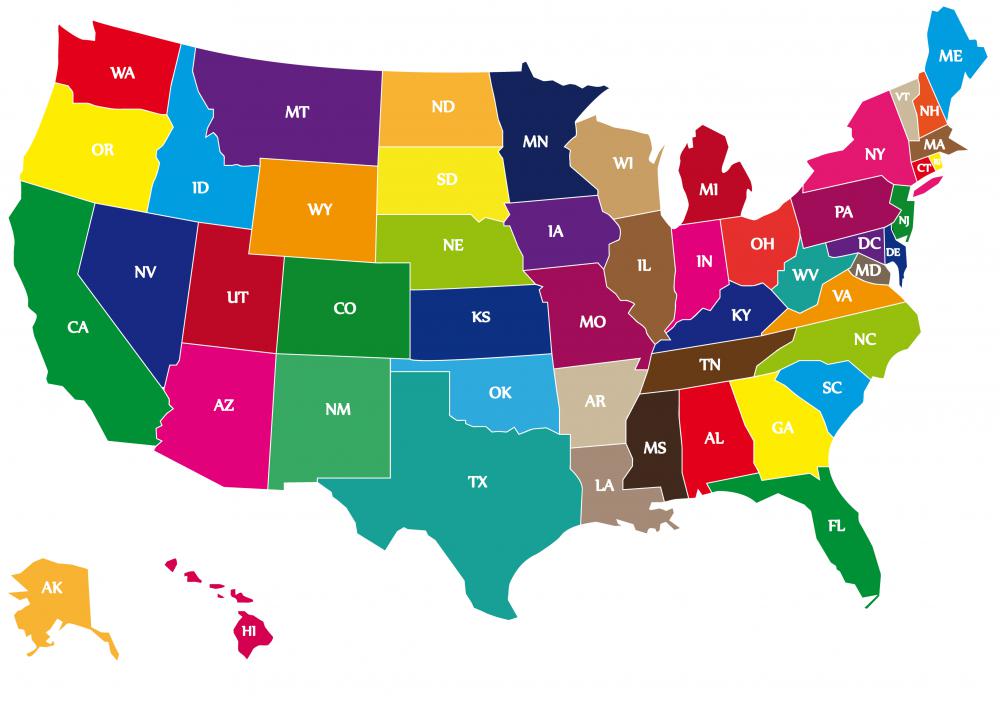At HomeQuestionsAnswered, we're committed to delivering accurate, trustworthy information. Our expert-authored content is rigorously fact-checked and sourced from credible authorities. Discover how we uphold the highest standards in providing you with reliable knowledge.
What is a Cypress Tree?
A cypress tree can be any number of different plants, particularly those in the cypress family, or Cupressaceae. For many people, the term cypress tree conjures up visions of giant, moss-covered trees in the swamps of the southeastern United States. For instance, the bald cypress tree is from this area, and known for its knobby knees that extend from the plant and protrude above the water. Cypress do grow in temperate areas, however, where they are conifers. Individual trees can live to be at least 600 years old.
Bald cypress trees, or Taxodium distichum, can be very large. They can grow to be 100-150 ft (30.5-45.8 m) tall. The trunks can also be quite big, occasionally growing to 16.4 ft (5 m). Cypress trees have been a desirable source of lumber, especially since the wood is water-resistant and full of natural chemicals that make it resistant to termites.

The trees have brown bark that is reddish or grayish, and has cracks in it. The leaves are 0.4-0.8 in (1-2 cm) long and equally as wide. They usually turn orange to red in autumn, and are then shed for the winter. The plants reproduce by seed cones that are 0.8-1.4 in (2-3.5 cm) long. These cones have 20-40 large seeds, which are either dispersed by squirrels or by flood waters.

A distinctive feature of the bald cypress tree is its root systems that grow through swamp waters, producing distinctive knees. Technically, these protrusions are known as pneumatophores. Once thought to help the tree by producing oxygen during floods, they are now believed to stabilize it during strong winds.
Native cypress trees grow mainly along rivers that have deposits of silt from floods. Their range in the U.S. is from Delaware, both south and west, to Texas. They also grow on the banks of the Mississippi River Valley. The growth of this cypress tree in the wild is limited to areas that do not freeze, because the seedlings cannot tolerate ice.
The bald cypress tree is a popular horticultural specimen. Adult trees of this type can tolerate the low humidities and temperatures that would kill young seedlings. The plant can be cultivated as far north as southern Canada, and is common in Asia and Europe. For good growth, it requires climates with warm summers. It will survive ocean climates with cool summers, but growth there if often very slow. Also, the cypress tree will not produce cones under these conditions.
Bonsai cypress trees are very popular. This is both because they are attractive, and they are easily grown by people new to the art of bonsai. The bonsai cypress tree is best grown outside, in full sun. The soil should be kept constantly moist to simulate swamp-like conditions. To get a large trunk on one, the grower should let the tree grow fairly large before cutting it back.
AS FEATURED ON:
AS FEATURED ON:












Discussion Comments
My friend and I have often found ourselves arguing over what a cypress tree actually looks like. I think of a cypress tree as an evergreen that stays dark green all the time. This is the type of cypress tree I grew up looking at.
She, on the other hand, has insisted that cypress trees are yellowish green. I have recently learned that there isn't just one kind of cypress tree and we were both correct.
This article points out even more variations in cypress trees. Some of the trees are so different that it seems strange that they are grouped together.
@Animandel - I am not an expert on bonsai, but I have read that both the Italian cypress tree and the bald cypress tree are good for bonsai. I find it a bit strange that the Italian cypress would be used because when it grows naturally it is so tall and a bit narrow.
The bald cypress seems like a more logical choice because of it's foliage, which resembles the feathers of a bird. The bald cypress also changes colors. In the fall it turns orange and then brown. I think the variety would enhance your pleasure of working with the trees.
I first became interested in the art of bonsai when I saw a movie in which one of the characters was trimming the small trees. Tending to the miniature trees appeared like it would be so relaxing and they were so cute.
In the movie, the trees looked like fully grown trees that had been hit by a shrinking ray. I have heard that there are many species of cypress trees that are good for bonsai and this article backs that up. Now I am wondering which varieties of cypress trees work best for bonsai.
Post your comments